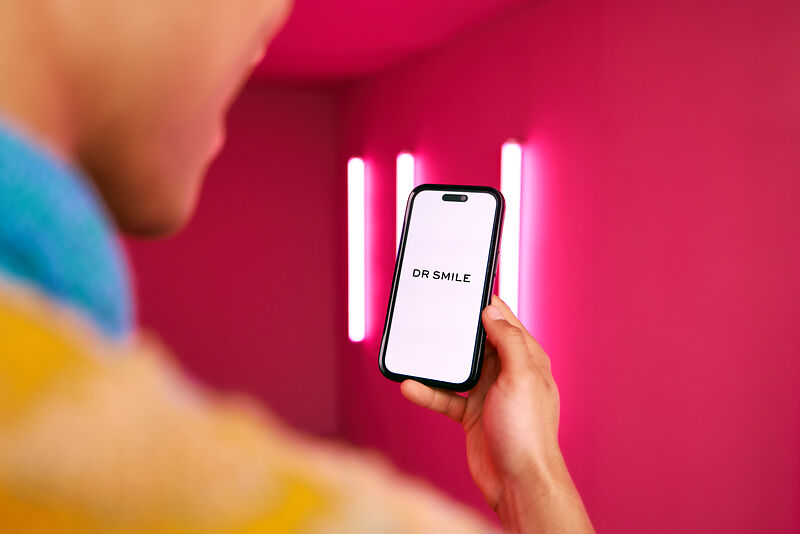Aligner-Therapie & wissenschaftliche Forschung
World's first time series study demonstrating the effect of electronic reminders and feedback on patient compliance with clear aligner treatment

Under the title "Effect of electronic reminders on patients' compliance during clear aligner treatment: an interrupted time series study", DR SMILE's Chief Medical Officer Dr. Lan Huong Timm published the world's first scientific time series study on the effect of e-reminders and e-feedback to increase treatment success in clear aligner patients in a research collaboration. The study was published in the renowned journal "Scientific Reports", a journal of the Nature portfolio.
Quote from Dr. med. dent. Lan Huong Timm:
""The combination of on-site visits and telemedicine has proven successful in recent years, especially during the COVID-19 pandemic. The COVID-19 pandemic has prompted dental practices and hospitals, and healthcare facilities to develop new ways to provide safe care. Teledentistry has proven to be a compelling alternative, as remote and on-site treatment can deliver comparable results. In addition, innovative methods allow us to be even closer to our patients. This is the first time series study to examine the impact of using e-reminders and e-feedback via a mobile app during clear aligner treatment. We believe research is essential to determine which treatments work better for patients and to provide evidence-based patient care." "
Outline of the study
Interrupted time-series analysis with 7,385 patients.
Patient adherence is important for achieving treatment goals during clear aligner therapy.
The purpose of this study was to investigate the effectiveness of electronic reminders and feedback on adherence to wearing times during aligner treatment.
Research period June-December 2019 and June-December 2020.
Routinely collected mobile application data with electronic reminders, electronic feedback, and a standardized application-based questionnaire to measure aligner wearing time
Use of a semimonthly cross-section of patient-reported poor compliance
Taking into account sociodemographic factors and cohort characteristics, stratified by periods before and after the intervention
Quote from Dr. med. Dent. Lan Huong Timm:
""This study shows how teleservices could improve patients' awareness of regular monitoring. This can greatly improve the success of orthodontic treatment by allowing dentists to monitor their patients in real-time in their environment, reduce adverse effects, and intervene early if needed. Combined with DR SMILE's chairside approach, remote interventions could be a viable and efficient approach given the widespread use of smartphones worldwide." "
Study results
Patient adherence improved significantly after the intervention in both women and men. Without electronic reminders, adherence was unchanged over a long period.
The effect was across all age groups, and no significant difference was found between age groups.
The results of the MMI model suggest that the introduction of electronic reminders had the desired effect.
Thus, in the long run, patient adherence can be optimally supported in terms of maximum treatment success.
Electronic reminders and feedback were able to improve patient compliance during treatment with aligners significantly.
Quote from Dr. med. dent. Lan Huong Timm:
""Applying the study approach to routine data allowed us to demonstrate the effects in a large real-world population with a high degree of generalizability and applicability. Patients found the mobile application easy to use, and patient compliance could be assessed in detail. We recommend that orthodontists and dentists use mobile apps to improve patient adherence and thus increase treatment success." "
Study evaluation
The results of our study demonstrate the benefits of telemedicine in improving treatment adherence for clear aligner patients. Closer monitoring of patient treatment, electronic reminders, and electronic feedback allow dentists to be closer to patients and intervene early when needed, resulting in higher treatment success. This study demonstrates how real-world clinical data can be used to improve patient care in an evidence-based manner and identify strategies to support patient care.
The complete study can be found here https://www.nature.com/articles/s41598-022-20820-5